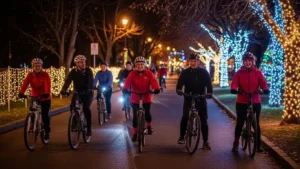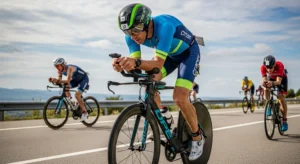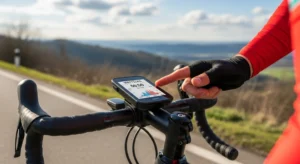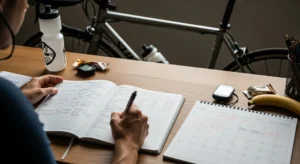Want to conquer the climbs? I’ll share what I’ve learned about training for climbing rides from 6 time U.S. National Champion Arnie Baker, MD, and emphasize training mostly indoors through the winter months on a stationary trainer.
Quick Recap: In Part 1, we discussed some of the basic set up for indoor training, along with how to account for mileage, etc. In Part 2, we’ve covered breathing, rhythm and focus. Part 3, we covered gear selection and saddle position. Finally, in Part 4, we covered power meter workouts on your stationary trainer.
In this final installment, we’ll dive into the last critical part of any race or ride: preparation. Love him or not, Lance Armstrong mastered the Tour de France and changed it forever. He, Chris Carmichael, and a few key teammates, dissected the 3-week course like military generals preparing for war. They reviewed every stage months in advance and rode many of them, meter by meter. Lance would set up discovery camps at the stages which they determined to be critical to the outcome of the overall race. He studied sections of the course for attack points and key junctions. Lance took his reconnaissance seriously and rode at full race pace, to determine how his body might respond to the terrain and where he could conserve energy.
Why shouldn’t we do the same? It takes months to train for events like Triple Bypass and The Death Ride. It doesn’t make sense to leave that big of a day up to chance. There are several things we can do to prepare for the big day. This is especially true if you plan on racing Ironman Lake Placid
When designing your training plan for the race, consider the course. Ask yourself questions like: how many total feet of climbing? Is it consistent climbing or up and down? What is the altitude and weather? What’s the distance between rest stops and what do they provide? This isn’t an exhaustive list but it’s a good start.
Speaking from experience regarding The Triple Bypass, the altitude is a killer. Maybe I was extra sensitive to it, coming from San Diego, but pedaling at 12,000 feet felt like pedaling with concrete boots. Take it seriously. Make a plan to get up to altitude 4 or 5 times before the event. It took me 3-4 days to feel “normal”, while staying in Dillon, Colorado. I arrived early and built in a few rides to acclimatize. The jury is still out on that fact. Some experts say that unless you’re going to be 3-4 weeks early and living at altitude for extended periods, don’t bother with arriving early. They say it’s best to arrive the night before and do the race the very next day. Regardless of which way you go, it will serve you well to get a few high altitude rides in prior to the event.
The last piece we learned from Arnie was about pacing. It’s important to determine your goal. Are you just going to finish or are you attempting to achieve a certain finishing time? That will have a big impact on your training and your race plan. Once you’ve determined your goal, you can work backwards and figure out what pace you need to maintain. Your power meter will help you match a wattage target to that pace. Be sure to stick with your plan.
Good luck on your training!
I’d be happy to help if you have any further questions, about nutrition, weight loss, or training. Please e-mail iBikeBlog. Thank you!




